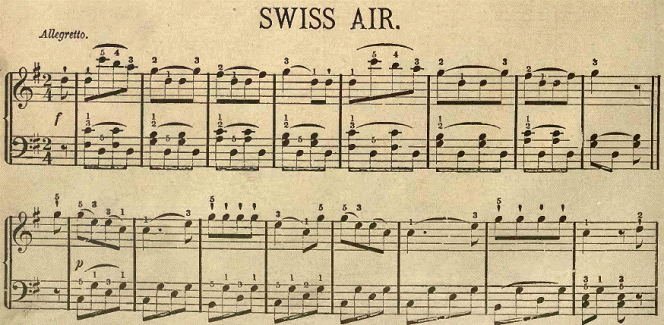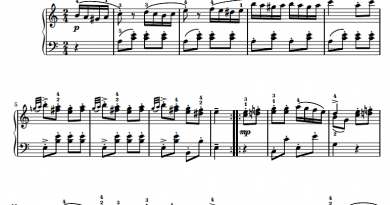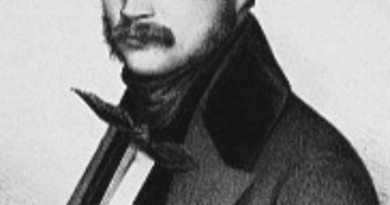How to play the Staccato touch on the piano
In one of the previous exercises we have spoken of the staccato touch. “We will now dwell more fully on this subject. The connected or legato style of playing we have thus far used. The detached or staccato style is the opposite of the legato, for it separates the notes as if there were rests between them. This is accomplished by lifting the fingers from the keys before the full value of the note has expired. There are several ways of producing this effect. One of them is by motion of the fingers towards the palm of the hand, as will be Men from the illustration below.

How to play staccato on the piano
When thus playing staccato the hand remains still just are in the legato style of playing, while the fingers are quickly withdrawn from the keys. Another style of staccato is executed by the wrist-action of which we shall speak in another place. The staccato is indicated by dots… or by dashes tit placed over or under the notes. The last is called the full staccato, the first is called simply staccato. “When no dots are placed over the notes, they are to be played in the legato style.
In all the Five Finger Exercises thus far used, we simply employed the legato touch, and in the future we shall have to introduce still other exercises of the same character, for the legato touch, being of most importance in music, should constantly receive attention, and should incessantly be practiced. All the exercises pre simply designed to develop the technique of the player. They ought to be the daily study of every faithful pupil, for without them success is not possible. ID the following Etude there is a combination of the legato and staccato touch. ETUDE.
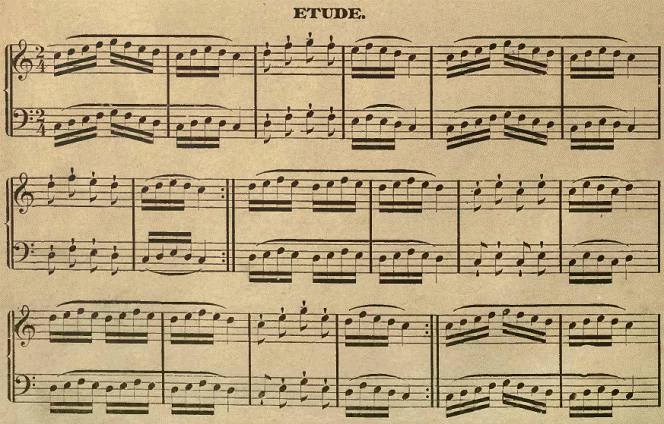

Piano Etude on staccato playing
When an exercise assumes art- form, that is, when it is written in the form of a piece, and is designed to overcome certain technical difficulties, it is called an Etude. Etude for Staccato Playing:
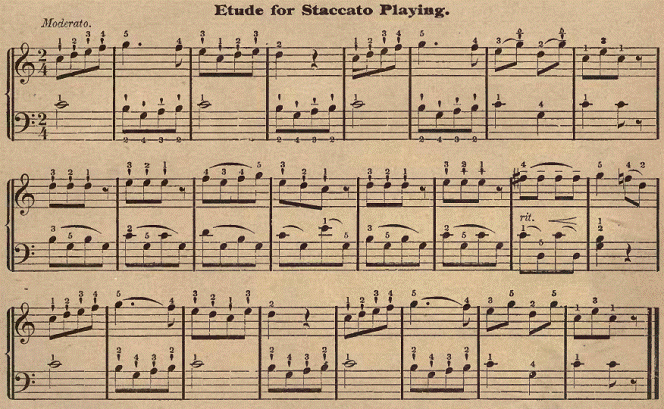
IN THE MEADOW. RONDO. the first two notes, but play the second very short. Let the teacher first play the lesson for the pupil.

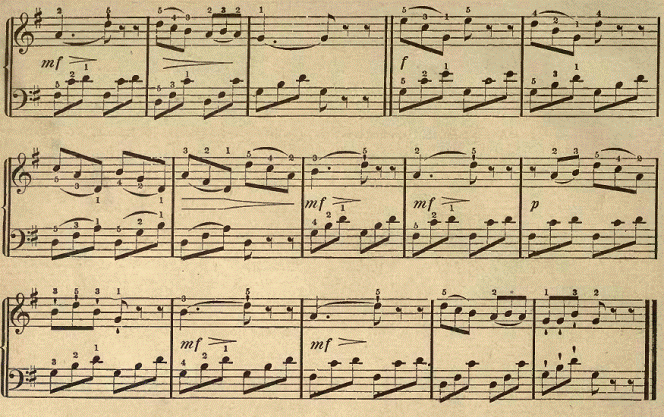
The following amusement begins with an incomplete measure. The last measure of the piece is also incomplete. The first eighth note must be added to the last measure, whereby it becomes complete. Observe the staccato notes. Allegretto.
SWISS AIR.
